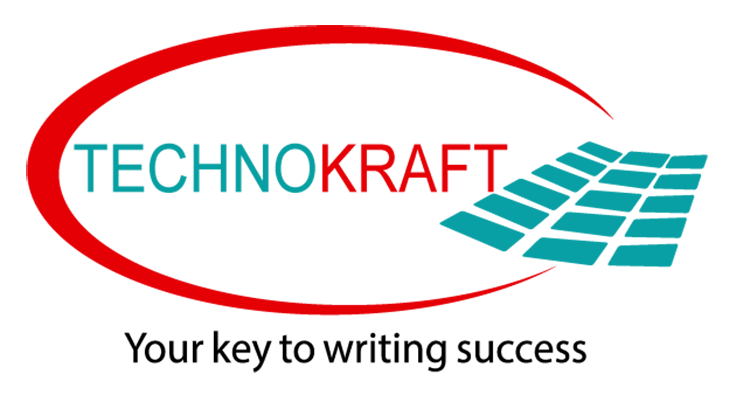
The Hidden Craft Behind Clear Content: A Deep Dive into Technical Writing
The Hidden Craft Behind Clear Content: A Deep Dive into Technical Writing
Technical Writing Craft Guide how people understand complex ideas, tools, and processes. Although it often stays behind the scenes, it plays a major role in technology, engineering, business, science, and countless digital experiences. Clear documentation empowers teams, guides customers, and helps brands build trust. Because of this, technical writing has become a key skill in today’s fast-moving world. This blog explores everything about technical writing—its purpose, principles, skills, processes, and impact. Each section highlights how the craft turns complexity into clarity, making information simple, useful, and accessible.

1. Understanding Technical Writing: What It Truly Means
Technical Writing Craft Guide on creating clear, structured, and accurate content for a specific audience. Unlike creative writing or marketing copy, its main goal is to explain complex information in a simple way. Although the style is straightforward, it still demands deep thinking and strong communication skills.
Technical documents include manuals, guides, standard operating procedures, research reports, case studies, API documentation, whitepapers, and user assistance content. They support learning, problem-solving, and decision-making.
Moreover, technical writing is not limited to technology alone. It appears in healthcare, finance, manufacturing, aviation, robotics, education, and environmental studies. Whenever a process must be followed or a system must be understood, technical writing becomes essential.
Because modern industries rely heavily on digital tools, well-written documentation reduces confusion, saves time, and prevents costly errors. Teams depend on accurate instructions to operate smoothly. Users expect quick answers without reading long paragraphs. Clear writing supports both needs.
Another important point is audience-focused communication. Technical writers must identify the knowledge level of the reader. They also must adjust tone, format, and explanation depth accordingly. When the audience feels understood, the document becomes more effective.
In short, technical writing is a bridge between experts and learners. It transforms complex knowledge into usable information that supports growth and productivity.
2. Core Principles That Power Effective Technical Writing
Technical writing follows several principles that ensure clarity and impact. These principles shape how content flows, how ideas connect, and how the reader receives information. Even though industries vary, these rules remain consistent across domains.
Clarity is the most important principle. Sentences must deliver meaning without confusion. Writers must avoid vague terms and keep the message straightforward. When readers face complex content, clarity makes learning easier.
Accuracy ensures the information is correct. Technical writers cross-check data, validate facts with subject experts, and review specifications before publishing. A small error can cause major problems in technical environments.
Consistency maintains uniform structures, styles, and formats across documents. When the pattern stays the same, users understand steps faster. Consistent terminology also improves comprehension.
User-centric thinking shapes the structure of the document. Writers anticipate user questions and provide solutions in a logical order. This creates a smooth learning experience.
Conciseness keeps content tight and focused. Technical writing avoids unnecessary words. When writers remove clutter, readers stay engaged and understand instructions quickly.
Visual support is another principle. Diagrams, charts, infographics, tables, and screenshots simplify complex concepts. Many users prefer to see processes rather than read long descriptions. Good visuals improve retention and reduce errors.
Structured formatting plays a major role in readability. Headings, bullet points, numbering, and white space guide readers through the content. Structure helps users scan information and find answers faster.
Together, these principles build the foundation of effective technical writing. They turn complex data into an organized and accessible learning experience.
3. Essential Skills Every Technical Writer Should Master
Technical writing demands both technical knowledge and communication skills. Professionals in this field combine analysis, research, creativity, and structure to produce high-quality content.
One key skill is research ability. Writers must gather information from experts, documents, user experiences, and product testing. Strong research leads to accurate and reliable documentation.
Audience analysis is another vital skill. Understanding who will read the content shapes the tone, depth, and structure. A beginner-level guide differs dramatically from an expert reference manual. When writers know their audience, they craft more effective content.
Simplifying complex information requires clear thinking. Writers break down large ideas into smaller, digestible pieces. They reorganize content to create logical flow. They remove jargon unless necessary. This skill separates great technical writers from average ones.
Technical familiarity also matters. Writers do not need to be engineers or programmers, but they must understand the product or process they describe. This helps them explain ideas with confidence and precision.
Proficiency in writing tools enhances productivity. Writers often use content management systems, version control platforms, diagramming tools, grammar checkers, and formatting software. These tools help in producing polished and well-structured documents.
Another important skill is collaboration. Technical writers work closely with developers, designers, testers, engineers, and product managers. They ask questions, clarify doubts, and gather missing details. Strong communication builds trust and ensures accuracy.
Editing and proofreading form the final skill set. Writers refine content, remove errors, adjust tone, and enhance flow. A polished document reflects professionalism and reliability.
These skills empower technical writers to create content that educates, guides, and supports users effectively.
4. The Technical Writing Process: From Planning to Publishing
The technical writing process follows a structured workflow. This ensures the final document meets user needs and maintains clarity. Each step contributes to quality and consistency.
The process begins with planning. Writers identify the audience, purpose, scope, and format of the document. They also estimate the required research and the resources needed. Planning prevents confusion later.
Next comes information gathering. Writers collect data from subject matter experts, existing documents, product demos, research papers, and hands-on testing. This step forms the knowledge base for the document.
After gathering data, writers move to structuring. They create outlines, organize sections, and define the sequence of topics. Structure guides the entire writing stage and keeps content organized.
The drafting stage follows. Writers convert the outline into full paragraphs, instructions, diagrams, and examples. They maintain clarity, consistency, and precision. The first draft focuses on content, not perfection.
Next comes review and feedback. Technical writers collaborate with experts and stakeholders to verify accuracy. Reviews ensure the document reflects the correct information. Writers adjust content based on received feedback.
Editing refines the document. Writers correct grammar, improve flow, remove clutter, and adjust tone. Editing ensures high readability.
Finally, the content moves to publishing. Depending on the organization, documents may be uploaded to a knowledge base, shared as PDFs, added to help centers, or integrated into product interfaces.
The process does not end here. Maintenance is essential. Technology evolves, so documents must stay updated. Writers revise content regularly to reflect new features, safety guidelines, or standards.
This workflow creates stable, reliable, and user-friendly documentation that supports long-term success.
5. Impact and Future of Technical Writing in a Digital World
Technical writing plays an important role in modern industries. As digital products and technologies grow, the need for clear content increases. Users rely on documentation for installation, troubleshooting, and learning new tools. Companies depend on it to reduce support costs, increase product adoption, and improve customer satisfaction.
Technical writing also supports internal teams. Clear process documents, workflows, APIs, and engineering guides improve productivity. Teams collaborate better when information is easy to access and understand.
The future of technical writing is evolving. Artificial intelligence, automation, augmented reality, and interactive documentation are transforming the field. AI-supported tools help writers speed up research, simplify writing, and optimize structure.
Interactive content such as tutorials, step-by-step visual guides, and embedded videos improves learning experiences. Users prefer quick, dynamic answers over lengthy manuals.
Moreover, the rising demand for digital products increases opportunities for technical writers. Industries such as cybersecurity, software development, robotics, biotechnology, and fintech require strong documentation support.
Even with advanced tools, the writer’s role remains crucial. Machines can assist, but human judgment ensures clarity, relevance, and empathy for the reader. Technical writing will continue to grow as long as technology continues to innovate.
Its impact on learning, usability, and digital progress makes it an essential part of the modern world.
Conclusion
Technical Writing Craft Guide brings order, clarity, and structure to complex information. It guides users, supports professionals, and strengthens organizations. With its principles, skills, and systematic process, technical writing helps transform technical knowledge into accessible content. As industries evolve, the need for strong documentation will only grow. Technical writers play a key role in shaping how people interact with technology, products, and innovation. Their work makes knowledge easier to understand, use, and share—helping the world move forward with confidence.
